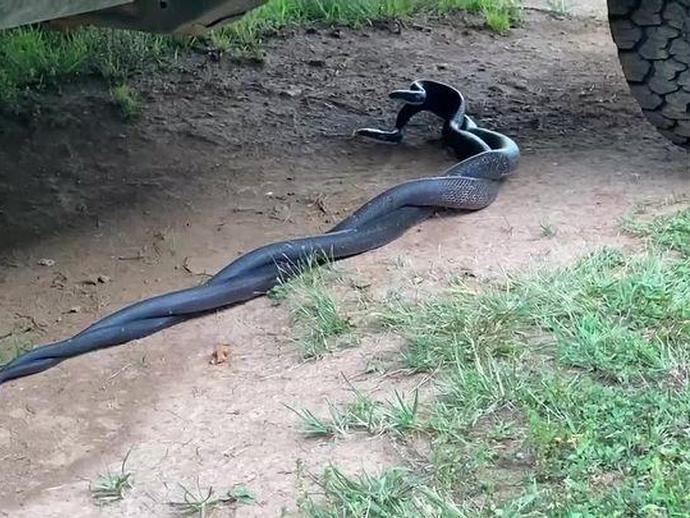June 18, 2021
It's time for today's special video edition of #BenInNature presented by our friends at Carter Bank & Trust!
Well, here's something you don't see every day! I was sitting on my front porch the other day when I heard some sort of commotion coming from underneath my car. I strolled over to find two eastern rat snakes (Pantherophis alleghaniensis) preparing to mate! Want to know how rat snakes mate? Read on, but be warned: it might get a little graphic. I'll try to keep it professional, though.
From May to late June, male rat snakes will begin searching for females. If they encounter another male rat snake near a female, a fight will usually break out, with the less dominant male slinking away. If the female is receptive, the dominant male will intertwine with her, which is what you can see in the above video.
Both male and female snakes have what's called a "cloaca," which is a cavity at the end of the digestive tract that contains the genitalia. Male snakes have a "hemipenis," which is essentially two penises, each connected to a single testicle. When the two snakes are ready to mate, they will evert (turn outward or inside out) their genitalia from their cloaca, and ... well, I don't guess I need to draw a picture from there.
After mating, the female will lay between six and two dozen eggs, generally in late July. The eggs take five to seven weeks to hatch, and then the newly-hatched baby eastern rat snakes will linger around their hatching site for one to two years. I'll be sure to post a picture of a juvenile eastern rat snake if and when I find one later this summer!
ABOUT #BenInNature
Social distancing can be difficult, but it presents a great opportunity to become reacquainted with nature. In this series of posts, Administrator of Science Ben Williams ventures outdoors to record a snapshot of the unique sights that can be found in the natural world. New updates are posted Monday - Friday, with previous posts highlighted on the weekends. This series of posts is made possible thanks to the support of VMNH Corporate Partner Carter Bank & Trust (www.cbtcares.com).
NATURE PHOTO IDENTIFICATIONS
If you discover something in nature that you would like help identifying, be sure to message us right here on Facebook with a picture (please include location and date of picture) and we'll have our experts help you identify it!

 Hours & Admissions
Hours & Admissions Directions
Directions

